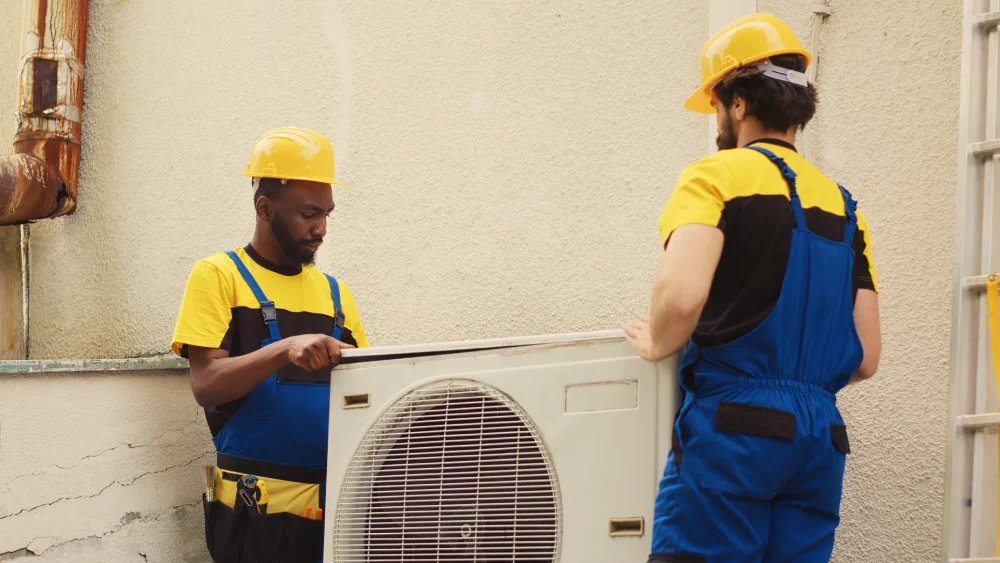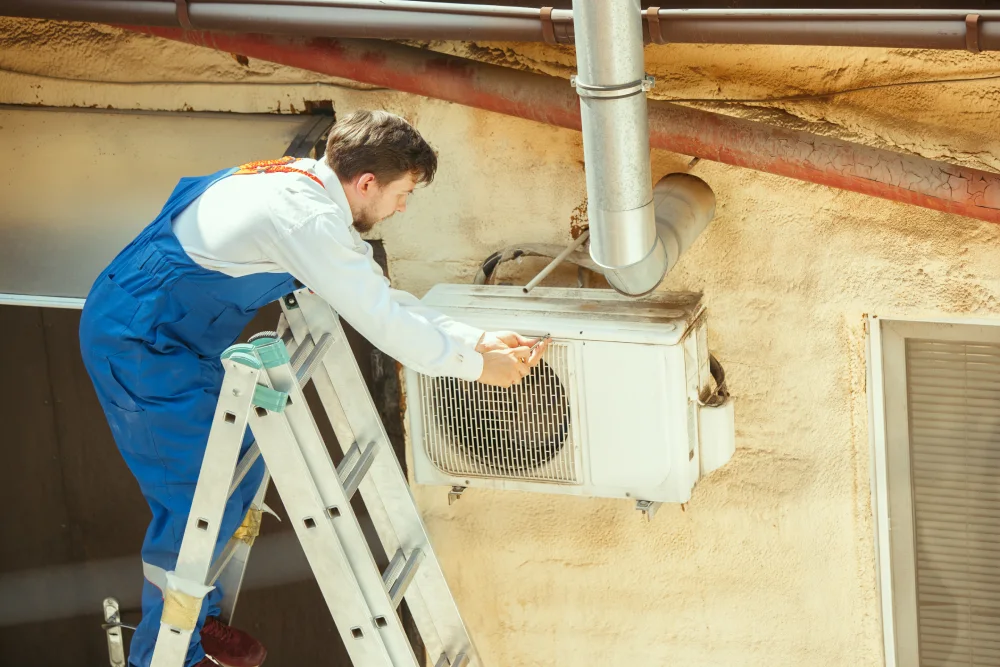One of the most important components of an AC unit is the drain line. Ideally, your cooling system’s condensate pan gathers water going through the drain line and directs it outside your home. However, a blocked AC drain line could cause problems over time. Your cooling unit may not work properly or be cooling inefficiently. To prevent your unit from further damage and costly repairs, it’s important to know the signs of clogged AC drain line.
In this post, we’ll discuss essential steps to fix a clogged drain line and telltale signs your AC’s drain line is obstructed.
Causes of Clogged AC Drain Line
Your HVAC system’s evaporator coils extract moisture from the air, accumulating water that eventually drains through the drain line. The water from the drip pan may lead to dirt, dust, and debris accumulation, which can clog the system with mold and mildew. You can detect the signs of clogged AC drain line through several indicators.
- Dirt and Debris — Over time, dust, dirt, and other debris can accumulate within the AC system, including the drain line. This buildup can obstruct the flow of water, leading to clogs in the drain line.
- Algae and Mold Growth — The dark, damp environment inside the drain line provides an ideal breeding ground for algae and mold. As these organisms multiply, they can form blockages within the drain line, hindering proper drainage.
- Improper Installation — If the AC system is not installed correctly, it can lead to issues with the drain line. For example, if the drain line is not sloped correctly or if there are kinks or bends in the line, it can impede the flow of water and contribute to clogs.
- Lack of Maintenance — Regular maintenance of the AC system, including cleaning the drain line, is essential for preventing clogs. Without proper upkeep, dirt, debris, and biological growth can accumulate unchecked, increasing the likelihood of a clogged drain line.
7 Signs of Clogged AC Drain Line
One of the earliest and most noticeable signs of clogged AC drain line is a pool of water on the ground around your air conditioner. It’s important to take immediate action when dealing with a clogged AC drain line, as it can lead to significant water damage, mold growth, and a weakened foundation.
HVAC professionals, such as Tropic Air Conditioner, will check and remove debris from the AC condensate pan as a precautionary step. Regular AC maintenance tune-ups and inspections are important to keep your cooling unit in top condition.
Water Leakage
One of the most common signs of clogged AC drain line is water leakage around the indoor unit. When the drain line is obstructed, water backs up and overflows, leading to puddles or drips near the unit.
Musty Odor
A clogged drain line can create a breeding ground for mold and mildew due to stagnant water accumulation. This can result in a noticeable musty odor emanating from the air conditioner vents or surrounding areas.
Reduced Cooling Efficiency
One of the signs of clogged AC drain line can impede the proper functioning of the air conditioning system, reducing its cooling efficiency. As water accumulates, it can interfere with the evaporator coil’s ability to extract heat from the air, resulting in decreased cooling performance.
Unusual Sounds
A clogged drain line can cause the air conditioning system to make gurgling or bubbling sounds. These noises occur as air struggles to pass through the blocked drain line.
Visible Blockage
In some cases, you may be able to visually inspect the drain line and notice a physical blockage, such as debris, algae growth, or mold buildup. This is a clear indication that the drain line needs to be cleared to restore proper drainage.
How To Fix a Clogged AC Drain Line
Regular maintenance of the AC system, including cleaning the drain line, is essential for preventing clogs. Without proper upkeep, dirt and debris can accumulate, increasing the likelihood of signs of clogged AC drain line.
Here’s how you can fix a clogged AC drain line.
- Turn Off the AC — To prevent further water leakage or damage, Start by turning off the air conditioning system.
- Locate the Drain Line — Find the access point to the AC drain line, typically near the indoor unit or the condensate pan.
- Inspect for Clogs — Visually inspect the drain line for any visible blockages, such as debris, algae, or mold buildup.
- Prepare Cleaning Solution — Mix a solution of warm water and mild detergent or vinegar to help dissolve and flush out the clog.
- Flush the Drain Line — Use a funnel or container to pour the cleaning solution into the drain line. Allow it to sit for a few minutes to loosen any obstructions.
- Clear the Line —- Use a plumbing snake, wire brush, or compressed air to carefully dislodge and remove any stubborn clogs from the drain line.
- Flush with Water —- Flush the drain line with clean water to rinse away loosened debris and ensure it is clear and flowing freely.
8. Test the System —- Once the drain line is cleared, turn the AC back on and monitor for any signs of leakage or drainage issues. If the problem persists, or if you’re uncomfortable performing these steps, contact a professional HVAC technician for assistance.

Frequently Asked Questions
How can I tell if my AC drain line is clogged?
Common signs of a clogged AC drain line include water leakage around the indoor unit, musty odors coming from the vents, reduced cooling efficiency, increased indoor humidity levels, ice formation on the evaporator coil, unusual sounds like gurgling or bubbling, and visible blockages in the drain line.
Can I unclog the AC drain line myself?
Depending on the severity of the clog and your level of comfort with DIY tasks, you may be able to unclog the AC drain line yourself using methods like flushing with warm water and detergent, using a wet/dry vacuum, clearing the drain opening, or applying a drain line cleaner. However, if you’re unsure or if DIY attempts fail, it’s best to seek professional assistance.
How often should I clean my AC drain line?
It’s recommended that the AC drain line be cleaned as part of regular HVAC maintenance, typically performed annually. However, in environments with high humidity or where the AC system is heavily used, more frequent cleaning may be necessary to prevent clogs and maintain optimal performance.
What can happen if I ignore a clogged AC drain line?
Ignoring a clogged AC drain line can lead to water damage to your home or property, mold growth within the HVAC system and ductwork, reduced cooling efficiency, increased energy consumption, foul odors circulating through the indoor air, and potential malfunctions or breakdowns of the AC system.
Conclusion
If DIY methods fail to clear the clog or if you’re uncomfortable performing these tasks yourself, it’s advisable to contact a professional HVAC technician. At Tropic Air Conditioning, our certified team has the expertise and specialized equipment to safely and effectively clear the clogged drain line.
If your cooling unit is exhibiting signs of a clogged AC drain line, don’t hesitate to call us for some much-needed AC maintenance and repair service.




